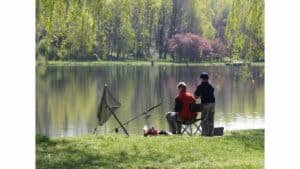The call of the wild has a unique luster, a siren song that appeals to the most primal parts of our humanity. In America, where the landscape tells stories of grandeur and unspoiled beauty, wildlife sanctuaries stand as beacons of hope and habitats for countless species. This article celebrates the richness of America’s fauna, the sanctuaries that offer a refuge for them, and the unique experiences that await those who venture into their midst.
America’s Fauna: Diverse and Endangered
From grizzly bears to bald eagles, the United States is home to a variety of remarkable wildlife species. The country boasts an impressive 432 mammal species, over 800 bird species, and around 500 reptile and amphibian species. However, many of these animals are facing constant threats from habitat loss, pollution, climate change, and human encroachment. As a result, the need for wildlife sanctuaries has become increasingly critical in ensuring the survival of these species.
The Role of Wildlife Sanctuaries
Wildlife sanctuaries play a crucial role in conservation efforts by providing safe havens for endangered animals to thrive and reproduce. These protected areas also serve as research centers for scientists to study and understand animal behavior, habitat needs, and population dynamics. Furthermore, they offer educational opportunities for the public to learn about the importance of conservation and how they can contribute to preserving these animals for future generations.
Unique Encounters in Wildlife Sanctuaries
Visiting a wildlife sanctuary is an unforgettable experience that allows you to witness the beauty of nature and its inhabitants up close. From observing grizzly bears fishing in Alaska’s Katmai National Park to spotting humpback whales breaching in Hawaii’s Humpback Whale National Marine Sanctuary, these encounters offer a rare glimpse into the lives of these animals. You can also embark on guided tours or participate in volunteer programs to learn more about wildlife conservation and contribute to the protection of these species.
The Importance of Responsible Tourism
While wildlife sanctuaries provide a safe environment for endangered animals, they also rely on responsible tourism to support their conservation efforts. It is essential to follow guidelines and regulations set by the sanctuary to ensure that your visit does not harm the animals or their habitat. This includes avoiding feeding or touching the animals and staying a safe distance from them. By being a responsible tourist, you can help preserve the delicate balance of these ecosystems and ensure that future generations can also enjoy these unique encounters with wildlife.
Threats to Wildlife Sanctuaries
Despite their importance, wildlife sanctuaries face numerous threats that put the animals and their habitats in danger. Illegal poaching and hunting, habitat destruction, and pollution are just some of the challenges these sanctuaries must overcome to protect their inhabitants. Climate change also poses a significant threat, as it alters the delicate balance of ecosystems and impacts the survival of many species. As visitors to these sanctuaries, we must be aware of these threats and support conservation efforts in any way we can.
How You Can Help
Visiting a wildlife sanctuary and following responsible tourism practices is a crucial way to support these conservation efforts. You can also donate to organizations that work towards protecting endangered species and their habitats, or volunteer your time to help with research and conservation projects. By spreading awareness about the importance of wildlife sanctuaries and advocating for their protection, we can all contribute to preserving our planet’s biodiversity. Let’s work together to ensure that these magnificent animals have a safe and secure future in their natural habitats. So don’t hesitate to visit a wildlife sanctuary on your next trip, and make sure to leave only footprints behind while taking home cherished memories of these incredible creatures in their natural environment. Remember, every small action counts towards the greater goal of protecting our planet’s wildlife. So let’s join hands and be responsible travelers, so that future generations can also experience the wonders of these beautiful sanctuaries filled with fascinating animals and thriving ecosystems. Let’s make a positive impact and leave behind a legacy of conservation for our planet and its inhabitants to thrive in harmony.
Introduction
Wildlife sanctuaries play a pivotal role in conservation, offering a safe haven for species that might otherwise fall victim to urban sprawl, climate change, or other human activities. These protected environments are not just vital for the flora and fauna that call them home but also serve as educational and recreational spaces. This immersive piece will take you through the heart of these sanctuaries, where you can witness the colorful tapestry of America’s wildlife.
Exploring America’s Fauna
A Haven for Mammals
From the elusive mountain lion to the charismatic manatee, the United States harbors a broad diversity of mammals. In sanctuaries like Yellowstone, grizzly bears forage for salmon, and the flittering antics of flying squirrels captivate visitors at dawn and dusk. These protected areas sustain populations of iconic species, showcasing the beauty and the resilience of America’s fauna.
Avian Diversity in Flight
The United States is a haven for birds, with its skies alive with migrations and native populations. San Diego’s Torrey Pines, for example, offers a glimpse into the world of the California condor – a species once on the brink of extinction. From the bald eagle to the snowy owl, sanctuaries provide a snapshot into the delicate balance of bird life in America.
Reptiles and Amphibians: The Unsung Heroes
Often overlooked, reptiles and amphibians are essential components of America’s ecosystems. Florida’s Everglades shelters the American alligator, a species once nearly wiped out due to hunting. Meanwhile, the Nevada desert is home to the desert tortoise, a creature whose slow and steady existence epitomizes the sanctuary’s role in wildlife conservation.
Beneath the Waves: Marine Sanctuary Marvels
American marine sanctuaries, like the Papahānaumokuākea Marine National Monument in Hawaii, are some of the largest and most remote areas in the United States. Home to a plethora of marine life, they illustrate the importance of preserving underwater ecosystems. Here, humpback whales breach while coral reefs teem with iridescent fish, showcasing the vibrant spectrum of oceanic fauna.
Unique Encounters
Connecting with Nature
For those who feel the pull of the natural world, sanctuaries offer an inimitable form of solace and wonder. With personal anecdotes from nature enthusiasts, this section will detail experiences such as the first sighting of a beaver constructing its dam, or the thrill of hearing a wolf’s howl echo through the hills of a sanctuary.
Through the Lens of a Photographer
Wildlife photographers will share their most captivating moments, from catching the glint in a red-tailed hawk’s eye to photographing a migrating monarch butterfly resting on a wildflower. These stories will inspire readers to view wildlife sanctuaries not just as destinations but as living galleries of the wild.
Conservation Efforts
Protecting and Preserving Ecosystems
Wildlife sanctuaries are not just about providing a refuge for fauna; they are key players in conservation. This section will feature success stories of endangered species increasing in numbers due to the protective measures in place within the sanctuaries. Whether it’s the revival of the American Bison in the Yellowstone ecosystem or the comeback of the North Atlantic right whales, these tales offer hope and a blueprint for conservation worldwide.
Tips for Visitors
Enjoying Wildlife Responsibly
With great access comes great responsibility. This section will provide a set of guidelines for visitors to sanctuaries, focusing on respectful behavior towards wildlife, ethical photography, and maintaining the integrity of the sanctuary environment. It will also include practical advice on what to pack, when to visit, and how to optimize your experience without disturbing the local inhabitants.
Conclusion
At the end of the trail, in the stillness of the forest, or the vast expanse of a seashore sanctuary, the profundity and poetry of America’s wildlife are on full display. These sanctuaries remind us of our stewardship to the environment and our role in preserving the wonders of nature for generations yet to come. I encourage you, dear reader, to plan your visit, not only to witness the spectacle of the wild but to play your part in the protection of these invaluable ecosystems. The call of the wild is not just a beckoning—it’s a pledge to preserve.



